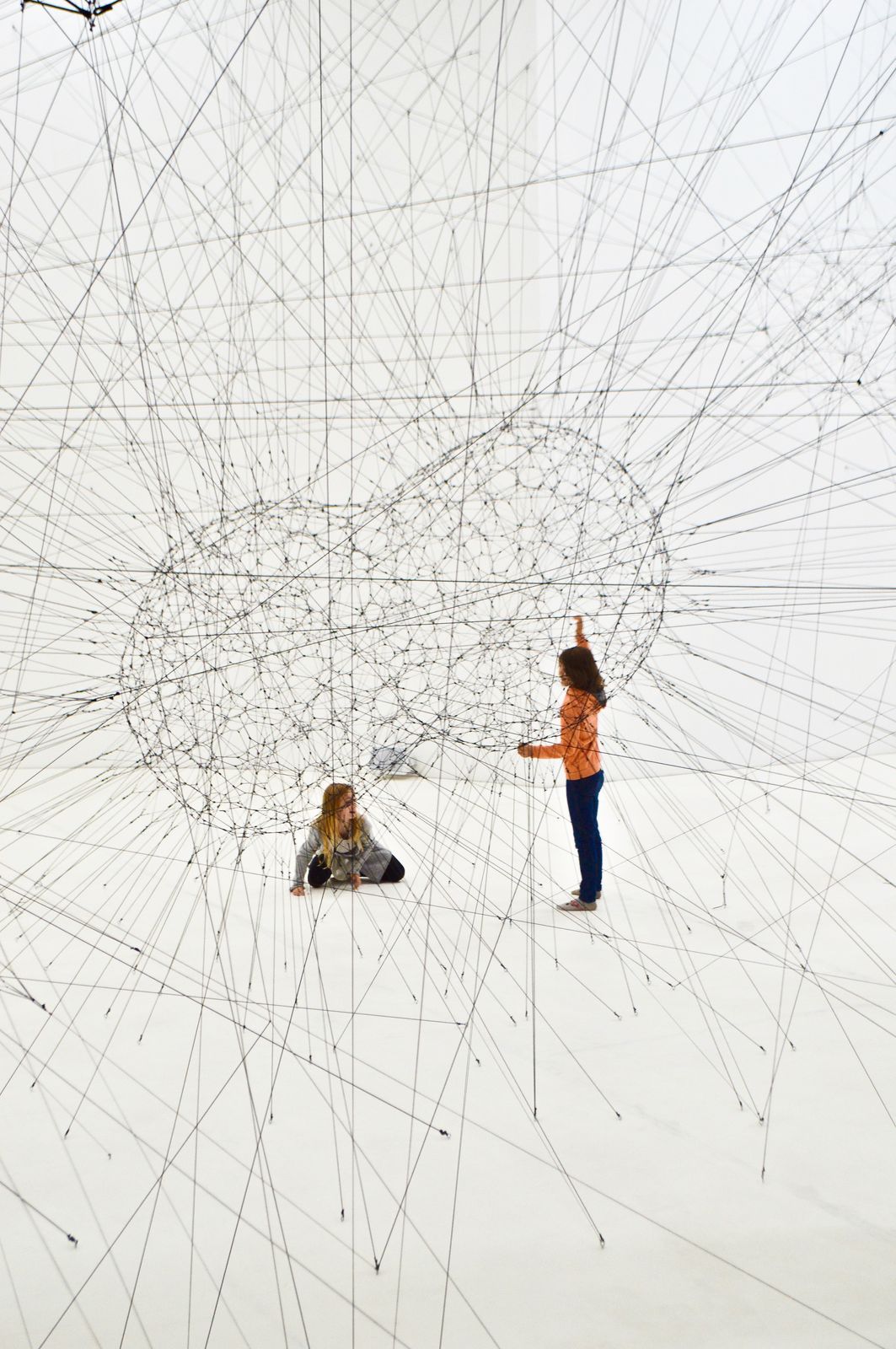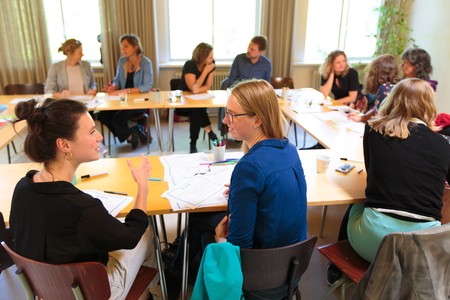Symbiosis in Development (SiD) is a systemic sustainability framework, developed by Except since 1999 with the help of dozens of experts in the field. It's a powerful, agile, and proven framework for building transformation roadmaps and solutions for organizations, developing systemic solutions, and aligning teams and processes. Its helps to understand and map system dynamics, to develop innovative ideas, and laying out efficient pathways to implementing them. The collaborative process of SiD utilizes a range of different concepts found in systems-thinking, network theory, and life cycle analysis to create holistic and multidisciplinary approaches to solve problems and develop symbiotic and sustainable solutions for almost any process or project.
SiD is made open source by Except, and it is free to use under the Creative Commons BY-SA-NC license. This includes the 480 page SiD omnibus book. This license is supported by the Except Integrated Sustainability foundation, the open source community, and a global network of partners. All SiD resources can be found on www.thinksid.org.
Summary of SiD
Symbiosis in Development (SiD) is an innovative framework to build systemic sustainability strategies, roadmaps and solutions. It is holistic in nature (whole-systems approach) while marrying it to practical methods and processes for systemic design and systems thinking. The framework is intended to facilitate understanding and decision-making within the realm of complexity that comes with sustainability problems, while being easy to implement, manageable and deliver on time.
Key points of the framework include:
- Systemic Approach: The SiD framework approaches issues from a systems perspective, taking into account the interconnections and interactions between various elements within a system. This approach is designed to allow for a more thorough understanding of complex issues.
- Holistic Perspective: The framework emphasizes the importance of looking at problems holistically, considering social, environmental, and economic aspects simultaneously. This perspective is rooted in the belief that only by addressing all facets of a problem can a truly sustainable solution be achieved.
- Design for Sustainability: SiD provides a toolkit for those wishing to design for sustainability. The book includes various techniques and tools to facilitate this, including methods for visualizing complex systems, techniques for problem analysis, and methods for developing sustainable solutions.
- Symbiosis and Interactions: The concept of 'symbiosis' is central to the SiD approach. This refers to mutually beneficial relationships between different parts of a system. The framework helps explore how these relationships can be leveraged for sustainability.
- Actionable and agile: SiD isn't just theory. It was born from practice and is aimed at practical implementation with agile processes and smart development methods. In the SiD documentation you can find dozens of case studies, examples, and actionable strategies to integrate sustainability in various fields - from urban planning to product design.
In conclusion, "Symbiosis in Development" presents a systematic and integrative approach to sustainable development. The SiD framework offers a new lens through which to view sustainability, focusing on the interconnections between social, environmental, and economic systems, and providing practical tools and techniques for creating sustainable solutions. There are hooks and processes to integrate any of the existing ESG frameworks an reporting standards, such as GRI, ISSB or using the UN SDGs, while providing an overarching umbrella for the development of a complete strategy.
The SiD framework has been documented in various media and formats, including video training. The framework itself is available for free and under Creative Commons licensing. The most complete documentation is the SiD omnibus book, the digital version available for free on the www.thinksid.org website.
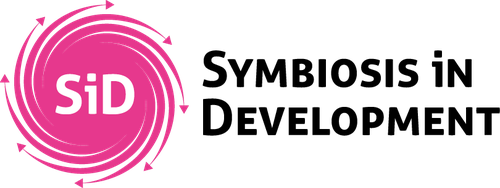
Why SiD?
Symbiosis in Development has been developed as a practical tool to develop long-term answers for pressing social issues. It was initiated in 2001 by sustainability pioneer Tom Bosschaert, as a response to the lack of alignment between the sciences, development, design, and management. SiD today has grown to be a complete framework for sustainable development, including theory, methods, practical processes, and application, including cocreation. It has been expanded and refined in over 700 projects around the world. It includes knowledge from hundreds of experts in sustainable development.
SiD translates this knowledge and expertise into a simple, clear, and manageable process. It makes the complexities of sustainable development manageable, practical, and inspiring. It combines both classical and complex system thinking, design thinking, co-creation, and stakeholder management into an effective development process. SiD has been applied to visions, strategies and roadmaps for multinational companies and (inter)national an local governments. Likewise, it has been used for regional, city, and neighborhood design. Currently, SiD is used by many individual sustainability professionals on a daily basis.
The uses of Symbiosis in Development
SiD is used for many purposes, including sustainable development, urban redevelopment, industry and construction redevelopment, agriculture, policy making, knowledge management, and business strategy. By including aspects such as circular economy principles, bio based design, resilience thinking, climate adaption and social justice, the SiD framework provides a comprehensive solution to our society’s challenges.
This article provides a short introduction to SiD, why it exists, how it works and the solutions SiD offers. More information and all SiD documentation is freely available on the Symbiosis in Development (SiD) website. Workshops and training in the SiD framework, as well as workshops to apply SiD to a challenge, are available, also through external partners in different countries.
Why is SiD needed?
SiD Definition of Sustainability
Sustainability is historically ill-defined, resulting in many problems with working on the topic. We aimed to develop a definition that is precise, clear, actionable, and helps safeguard the word from deterioration, as well as provide new avenues for fundamental sustainable development.
A vital component of the definition is the first sentence: it tells us to look at sustainability as a system property. Because of this, the main analytical components of SiD are focused on understanding, visualizing, and developing systems.
More information and background can be found in the SiD Sustainability Definition article.
Core Components
SiD consists of four core components, the underlying theory, the applied methods, the resulting processes and a set of applicable tools.
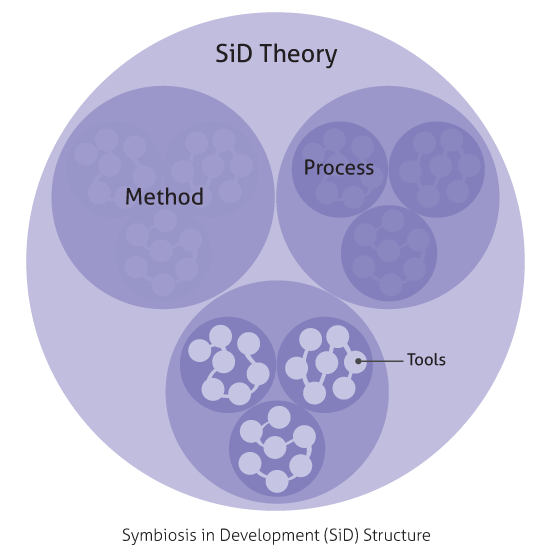
The SiD Theory
The SiD theory lays the foundation for its operation, ethics and reasoned approach. It defines systainability, systems, and complexity. It deals with approaching problems on a system level primarily and achieving sustainable cycles in that system. It expands into environmental ethics, network theory and other necessary components.
The SiD Method
The SiD Method consists of a detailed step-by-step approach to system-level goalsetting, analysis of systems, optimization and system level synthesis and evaluatation.
The SiD Process
The SiD Process details how the method is unfolded in time and how different disciplines come together to work on a problem together, including stakeholders and potential third parties. The SiD process combines bottom-up as well as top-down approaches at the same time in an iterative and collaborative working environment.
The SiD Tools
The SiD tools are a collection of new and existing tools that can be applied within a process. They help in performing valueable functions, such as Life Cycle Assessment, Network Analysis, Strategy tools, process tools and various software tools. In effect, a SiD process consists of stringing together a number of Sid Tools.
2. SiD’s underlying theory
Three dimensions: context, time and space
SiD recognizes the need to investigate systems in context, time and space simultaneously. Several tools help to develop this perspective both in a creative and in an analytical assessment way. Each of the dimensions are investigated on various scales, such as long term and short term, close by and far away, and through various levels of connectivity.
Three systemic levels of impact: system, network and object level
SiD recognizes at least three levels at which actions have impact on our society (or subsystem): first the direct or object level, then second the indirect or network-level, consisting of life cycle effects and others, and a third level: the system level. There are separate indicator sets for each, and they feed indicators from physical elements through network parameters to the system level, where sustainability can be evaluated.
See below diagram for an illustration of how this is used in an innovation trajectory.
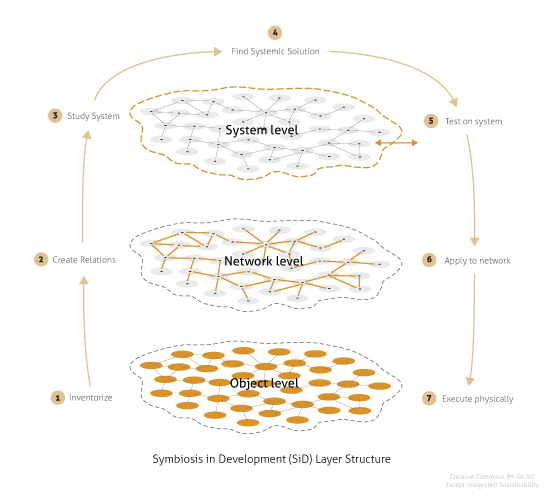
SiD tries to optimize the third level effects – the system level – first as these are in most cases several orders of magnitude more impactful than second or first level effects, as you can see on the picture below.

Full-spectrum analysis & externalities
SiD's framework includes full-spectrum analysis tools which aim to take into account all “externalities”. Externalities are costs or effects that are not usually taken into account and are therefore not evaluated, but belies hidden costs and risks as well as opportunities and solutions. Externalities cause many problems in the sustainable field, because most sustainable development tools are not full-spectrum. This results in well-meant solutions ending up being worse for society than not doing anything at all.
In order to evaluate on all important categories, we've developed categorization and indicator sets for the three different system layers of system, network and object. An overview diagram can be seen below.
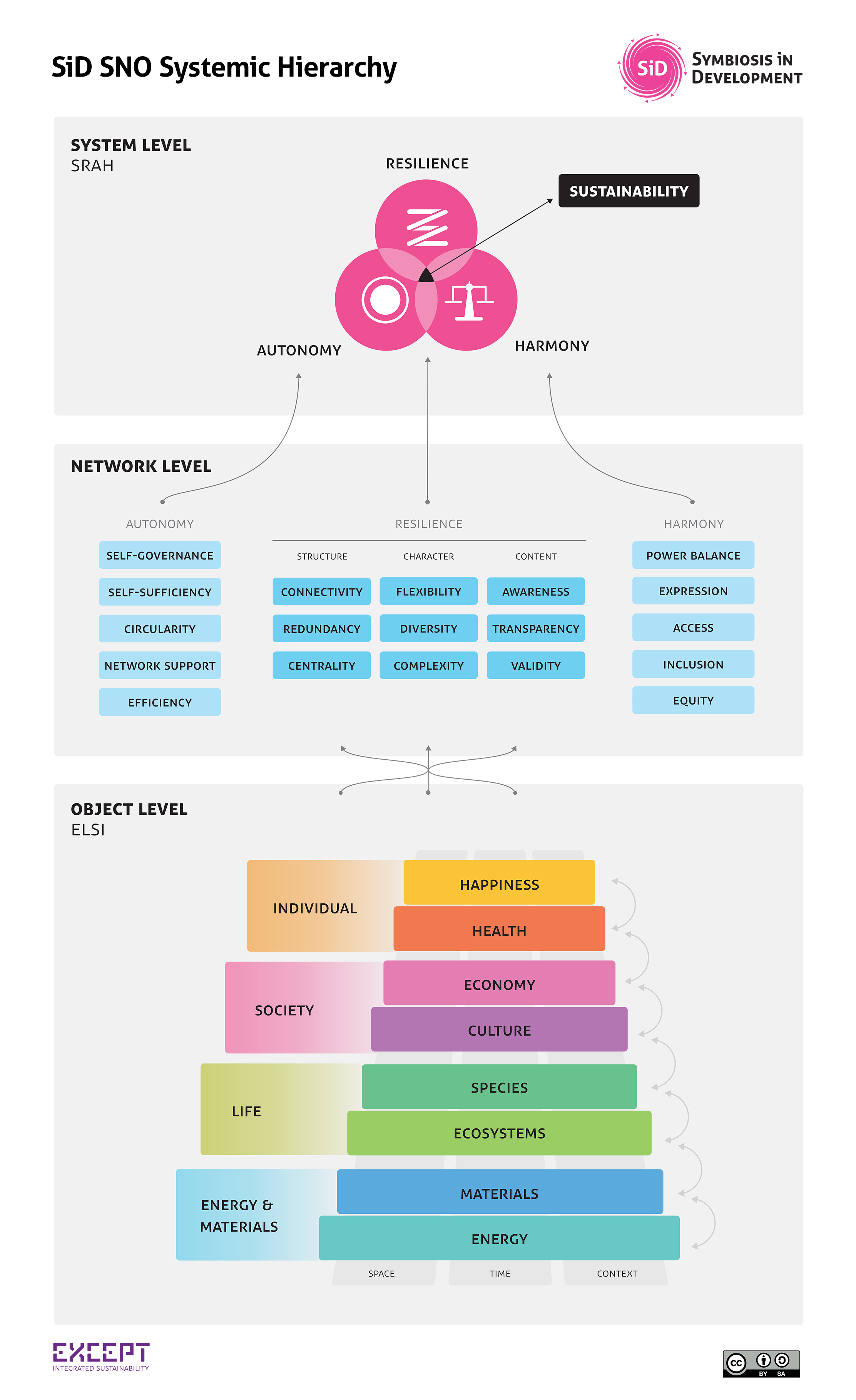
The object level indicator hierarchy is called SiD ELSI and is one of the most used tools of SiD, displayed below. A separate article explains the workings and uses of SiD ELSI.
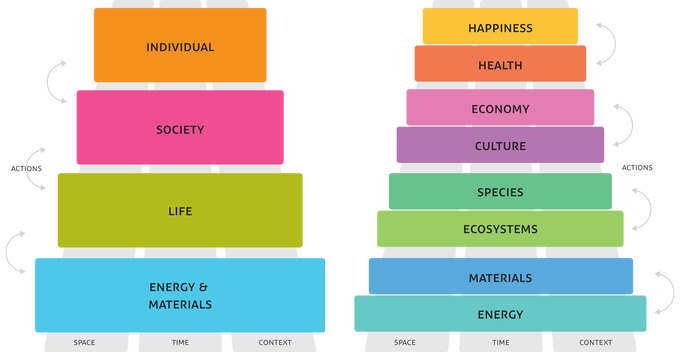
How SiD works
SiD Method: Action phase cycles
SiD's methods consist of cycles of action phases that need to happen for a full innovation cycle. The methods can be started at any point, and usually they are cycled several times during a project. Below an example of a SiD method cycle.
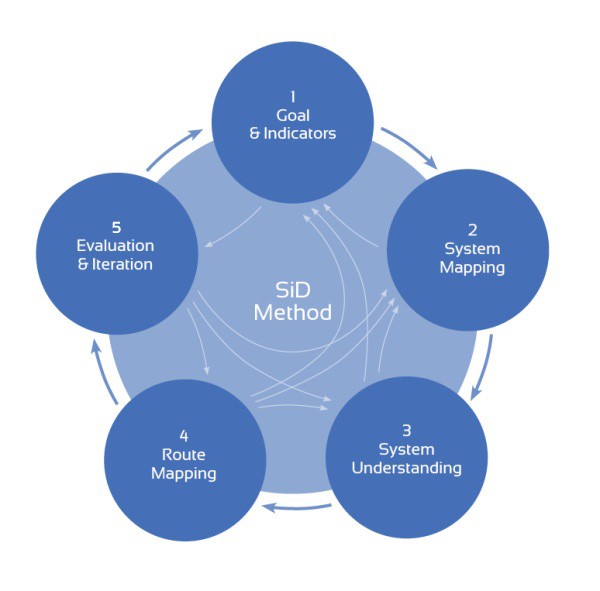
The SiD method brings people together, and lets them cooperate in an efficient, iterative cycle. Usually the method is executed using Innovation Labs, or as we call them: SiD sessions. 5-8 multi-disciplinary experts gather for 5 consecutive days in a single room, where they envision, analyze, map, understand, invent, and evaluate in rapid cycles. At the end of these 5 days, the results are taken and developed using the SiD process. With this approach, amazing insights have been developed in very short timeframes.
SiD Process and tools
SiD processes consist of a string of tools that together form a comprehensive project plan. Each process is unique for each project. Individual tools are strung together and arranged in a way so that they follow one or more method cycles. Below an example of a process map for the development of sustainable offices for Schiphol Airport.

Each SiD process contains four phases. The formation phase, the intelligence phase, the innovation phase and the development phase. The formation phase builds the team and the process planning. The intelligence phase typically consists of trend analysis, precedent research, stakeholder analysis, data analysis and a summarizing systems analysis quickscan. In the innovation phase, the SiD method is cycled through rapidly in the SiD co-creation sessions leading to the development phase. Other parts, such as stakeholder involvement, peer reviews, prototyping and testing, can all be modular components of the process, as needed.
What does SiD do?
SiD guides designers and decision-makers in incorporating problems beyond material and energy use, so to include social, ecological, economic, and political issues to find sustainable solutions. If we ever hope to achieve sustainability, we must optimize for all of these competing areas of concern at the same time – and this is what SiD does.
Results & solutions
SiD has resulted in many unique solutions that have been proven to excel over solutions developed in a traditional way.
One of the reasons we're so excited about SiD is that it provides us with the ability to leave our preconceptions at the door, and look at the world with fresh eyes and an open mind. Here are some more specific qualities of SiD.
People as a driving force
SiD steers us to look at the value of what's already there, to create better places with a minimum of physical investment. By placing systems analysis before co-creation sessions, we look with fresh eyes at the world before us, see longer term opportunities and risks, and their relationships. This leads to making the highest performance, healthiest place for people, so that people want to invest in their own situation, feel connected, inspired, and empowered. For example, in the redevelopment of the social housing neighborhood of Schiebroek-Zuid, the Except team applied SiD in a co-creation process with over 100 stakeholders, residents, and partners. When the project was complete, outlining a comprehensive redevelopment plan towards an energy, water and waste neutral neighborhood, all stakeholders had taken full ownership of the project. This allowed it to withstand various development challenges, such as the unexpected demise of the social housing corporation, and is still on its pathway today.
Nature as a driving force
Nature has value beyond the material, delivers free services, and can be self-maintaining. That's why SiD makes us think about applying natural systems as engines of positive redevelopment. Using SiD ELSI, we can evaluate biodiversity, ecosystems, and their capacity for value addition, such as in the Merredin Spirulina project. Thanks to SiD we were able to identify the Spirulina algae as a natural component that could solve social, economic and redevelopment challenges in Australia, something we would not have thought about otherwise..
Closed loop metabolisms
SiD wants to eliminate waste by closing loops, not just physical ones, but also economic and social loops. This leads to circular economies and those results desired by the blue economy. SiD's systemic approach maps systems and performs insightful analysis to be able to realize zero-energy, zero-waste, water-neutral and toxin free solutions.
Driving Innovation
Because SiD evaluates challenges fully immersed in their real-world context, it finds unique solutions for every situation. Given the same challenge in a different place, SiD will come up with a different, more suitable way forward. This automatically leads to context-specific and optimized innovation.
For example, for the Salesforce San Francisco Transbay Center, located in downtown San Francisco, the best solution for redeveloping an old transportation hub turned out to be a large public rooftop park, cycling rainwater, building biodiversity, and boosting real estate value. In a similar context in downtown Shanghai real estate value was boosted through food producing skyscraper farms using vertical agriculture and a mixed use circular program. Each context offers differences, however subtle, that allows some solutions to work better than others.
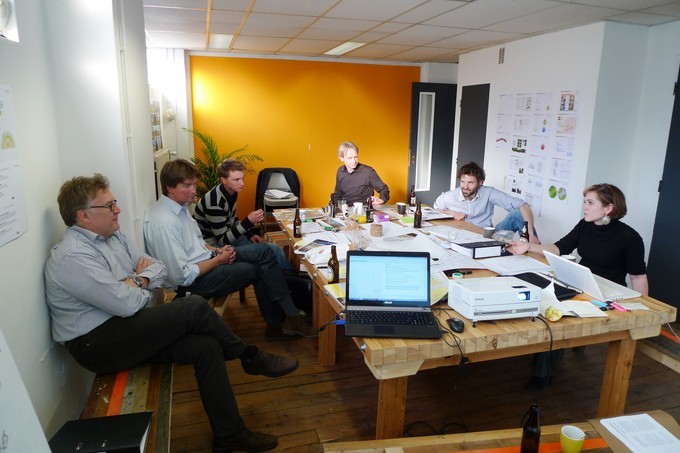
More…
We hope this overview has given some insight into the general structure of SiD, and its working processes. A more extensive explanation of SiD and all its components can be found on SiD's own website: www.ThinkSiD.org. There are also a few more articles on SiD:
- The SiD Sustainability Definition
- The SiD ELSI categorization system
- The Cog in the Machine (systems vs object thinking)
- The SiD Quick Guide
If you are interested in SiD and would like to know more, feel free to contact us. We regularly organize SiD workshops for companies. We'll be happy to discuss developing a workshop for your organization or community.
16 mei 2009
